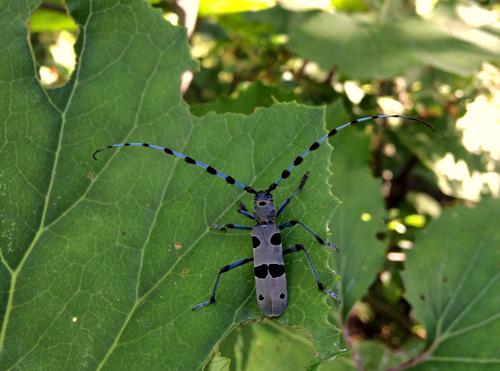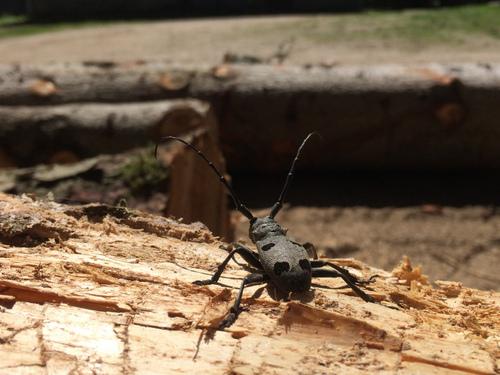Iva Miljević
As one of the most valuable protected areas in the Bosnia and Herzegovina, with 88% of the forested area, the Kozara National park represents a significant habitat for saproxylic species of beetles. Unfortunately, due to the lack of research and proper management, no legal protection and no distribution data, these species are being nonchalantly affected by human activities. The aim of this project is to conduct preliminary research of present species (with special focus on HD Annex II and IUCN species), provide information and create guidelines for the future sustainable management of their habitats and well-being of these sensitive species.

Rosalia alpina (Rosalia longicorn), threatened saproxylic beetle species. © Iva Miljevic
The primary focus of this research will be on saproxylic beetle species listed at the Annex II of the Habitats Directive occurring in Bosnia and Herzegovina.

Morimus funereus. ©Iva Miljevic
Majority of focus species are known from similar habitats within the country, while presence of only few is known for the National park Kozara (historical data). Due to the situation of having only old data and no recent research, it is necessary to obtain research of these species.
The project is intended to start in January 2018 and finish by the end of the year (December 2017). The activities with the Park’s management will, whatsoever, continue in order to create better understanding, research promotion and monitoring of present species. Besides regular meetings with the Park's management, after having first results of the field research (May/June), the workshop with the employees is planned to be held (about the project activities, goals, ways of involvement, general info on saproxylic beetles, their status and the importance of biodiversity and conservation).
Field research is intended to be conducted during the season peak (from mid-April to the end of August). The field work will be done on 3-4 days per month basis (including setting up of the traps, checking those already installed and analysis of the tree trunks) while the analysis of the collected material will take significantly more time and will be done in the lab with the help of local experts.
Promotional materials will be created for informing public and awareness raising (informative board at the Park, mini brochure, t-shirts and cotton bags). In addition, guidelines for sustainable habitat management of the saproxylic beetle species will be created by the end of the project implementation and will be delivered to National park and the Republic Institute for Protection of cultural, historical and nature heritage of Republic of Srpska.